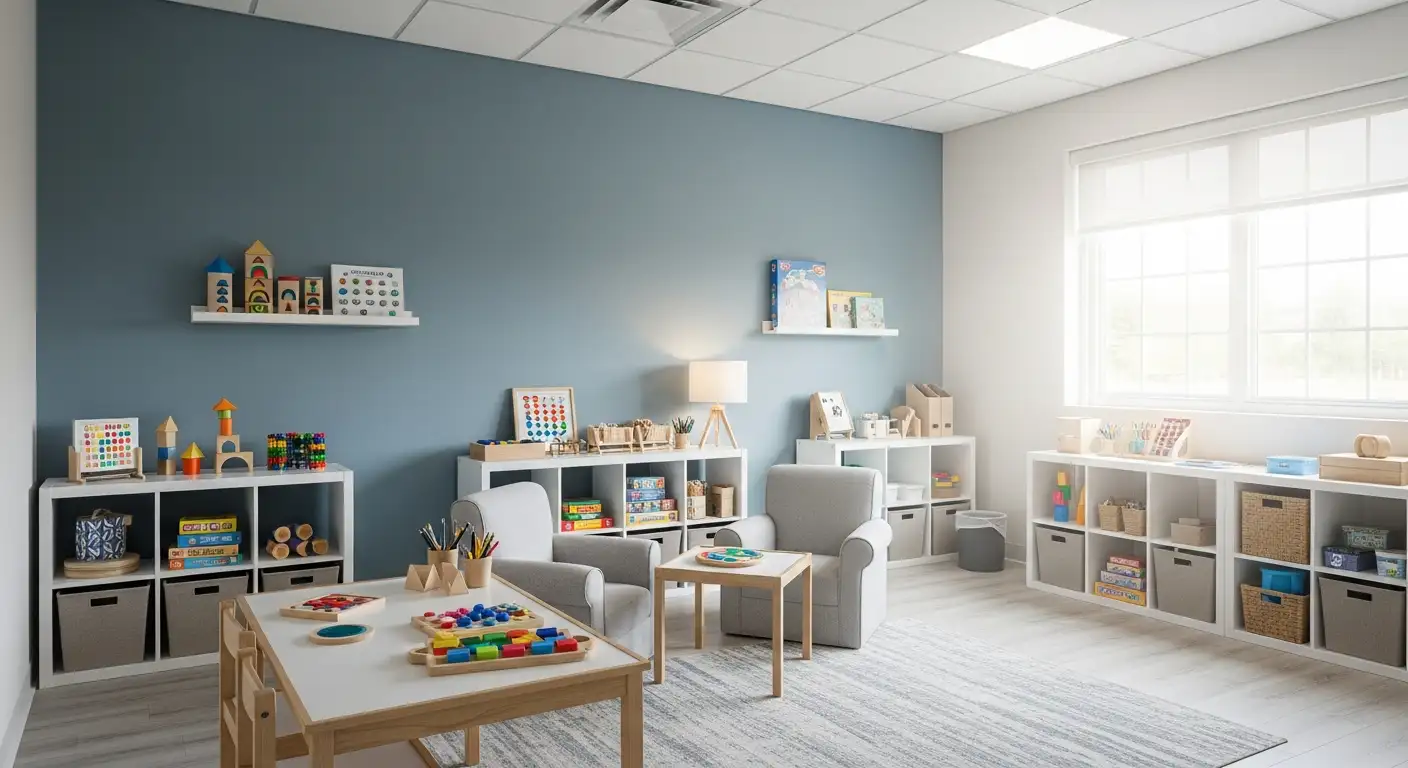Navigating Therapy Breaks with Confidence
Structured breaks during Applied Behavior Analysis (ABA) therapy are critical to maintaining progress and managing anxiety, especially for children with autism. Understanding how to effectively plan and implement these breaks can make a significant difference in supporting skill acquisition and emotional well-being.
Understanding ABA Therapy and Its Role in Autism Support

What is Applied Behavior Analysis (ABA) therapy, and how is it used to support individuals with autism?
Applied Behavior Analysis (ABA) therapy is a scientifically based treatment approach that focuses on improving specific behaviors in individuals with autism spectrum disorder (ASD). It involves the careful study of behavior through the A-B-C model — which stands for Antecedent, Behavior, and Consequence — to understand what triggers a behavior, the behavior itself, and its results.
ABA uses this analysis to design personalized interventions that encourage desired skills and reduce challenging behaviors. These interventions often include positive reinforcement techniques, where rewarding a behavior encourages its repetition.
Programs are tailored to each individual's unique needs, often delivered intensively, ranging from 20 to 40 hours weekly over months or years. Regular data collection guides adjustments to ensure optimal progress, targeting key areas such as communication, social interaction, attention, and daily living skills.
Customization and Goals of ABA Therapy
ABA therapy is not one-size-fits-all; it adapts to the learner's strengths, challenges, and preferences. The goals may vary from improving basic skills like eye contact or following instructions to more complex skills such as social communication and problem-solving.
Role of Professionals in Delivering ABA Therapy
Trained professionals, including Board Certified Behavior Analysts (BCBAs) and behavior therapists, implement ABA programs. They conduct assessments, develop customized plans, monitor progress, and engage families to reinforce learning at home. Their expertise ensures that interventions are evidence-based and effective.
ABA therapy is widely recognized by health organizations as a best practice for supporting individuals with autism, providing a structured, measurable, and adaptable framework to foster meaningful development and independence.
Key Providers of ABA Therapy and Their Roles
Who Typically Provides ABA Therapy for Individuals with Autism?
ABA therapy is primarily delivered by professionals with specialized training in behavior analysis. The main providers are Board-Certified Behavior Analysts (BCBAs), who design and oversee individualized intervention plans tailored to each learner's needs. Registered Behavior Technicians (RBTs) and trained therapists carry out daily therapy sessions under the supervision of a BCBA, ensuring consistent and accurate implementation.
Professional Qualifications
BCBAs must complete rigorous education, supervised experience, and pass a certification exam to qualify. RBTs undergo focused training and competency assessments to directly implement ABA techniques. The specialized qualifications of these providers ensure that therapy is based on evidence-backed, ethical practices that promote meaningful skill development.
Settings for Therapy Delivery
ABA therapy is flexible and can be provided in multiple environments to best suit the child and family. Common settings include homes, schools, specialized clinics, and community locations. Agencies like Solstice Behavioral Health offer both in-home and center-based ABA services, providing families with options especially during periods like holiday breaks.
Importance of Trained Staff
Having highly trained staff is essential to monitor progress, adjust intervention strategies, and maintain quality across settings. Skilled providers contribute to successful skill acquisition and behavioral growth by applying structured methods such as task analysis and chaining effectively. Furthermore, professional guidance supports caregivers through parent training sessions that promote consistent reinforcement at home.
Overall, qualified and trained ABA providers play a vital role in delivering tailored, comprehensive services that support children with autism in reaching their full potential.
Common Goals of ABA Therapy and How Breaks Fit In

What are the common goals of ABA therapy for autistic individuals?
ABA therapy primarily focuses on enhancing communication skills, both expressive and receptive, to help children interact more effectively with others. Social skills development is another major goal, including learning to share, take turns, and recognize emotions, which promotes richer social interactions.
Independence is strongly emphasized in ABA, with therapy targeting everyday tasks like toileting, dressing, and hygiene, along with essential community skills such as safety awareness and handling money. Additionally, decreasing challenging behaviors through positive reinforcement and tailored interventions is a core aim.
Personalized approaches ensure that therapy addresses each child's unique needs to encourage overall growth and smooth integration into social settings. Structured routines and scheduled breaks are vital components, providing predictability and stability.
For children with autism, predictable routines reduce anxiety and aid learning. Scheduled breaks, especially during transitions like holidays or school breaks, help prevent overstimulation and behavioral challenges. Visual schedules or task analyses break down complex activities into manageable steps, easing transitions and fostering confidence.
Maintaining structure during breaks ensures that skill regression is minimized and progress continues. ABA providers often include parent training and social skills groups to support families in reinforcing goals at home and during social occasions. Incorporating therapy goals into daily practice during holidays further aids in sustaining gains and enhancing adaptability.
Together, these elements make ABA therapy a comprehensive, adaptable, and effective approach tailored to the individual, promoting skill development and emotional well-being even during periods of disruption.
Measuring Progress and Adjusting Therapy Breaks

Data collection strategies in ABA
Effective progress measurement in ABA therapy relies heavily on systematic data collection. Two common methods are single-opportunity and multiple-opportunity data gathering. Single-opportunity data are collected by observing if a learner can complete each step of a task independently during a single trial. Multiple-opportunity data track performance over several attempts, providing a more detailed picture of skill mastery and consistency.
Single-opportunity vs multiple-opportunity data
Single-opportunity data help quickly identify which task steps the learner performs successfully and where assistance is needed. However, it may overestimate difficulties since the observation stops at the first error. Multiple-opportunity data, by allowing completion of all steps, offer insight into partial skill acquisition and the learner's ability to recover after mistakes. Both methods are valuable and often combined to tailor teaching strategies.
Visual tools and progress reports
Visual tools such as graphs and charts illustrate behavioral trends over time, making it easier to understand improvements or areas needing attention. Progress reports compile these findings alongside observational notes and assessment results, facilitating communication among therapists, parents, and educators. Using standardized assessments like the VB-MAPP alongside ongoing data supports objective evaluation of developmental milestones.
Using data to tailor therapy and breaks
Consistent data review enables therapists to adjust intervention intensity, skill targets, and break schedules, especially during holiday periods like winter break. Maintaining continuity in therapy while accommodating needed rest helps prevent skill regression and anxiety. Visual schedules and structured routines, often developed from data insights, reduce stress and foster smooth transitions during therapy breaks.
| Aspect | Description | Benefit |
|---|---|---|
| Single-opportunity data | Observes completion of each task step in one trial | Quickly identifies skill mastery or difficulty |
| Multiple-opportunity data | Tracks performance over multiple attempts | Provides detailed skill acquisition profile |
| Visual tools | Graphs and progress reports showcasing trends | Enhances understanding and communication |
| Data-driven therapy adjustment | Using collected data to plan breaks and tailor goals | Reduces regression and anxiety during therapy disruptions |
The Importance of Maintaining Routines and Managing Breaks

Role of Structured Routines for Children with Autism
Children with autism depend heavily on structured routines to feel secure and to succeed in their daily activities. These routines provide predictability, which helps reduce anxiety and supports consistent learning and behavioral patterns. When routines are maintained, children are more likely to engage and respond positively to teaching strategies.
Impact of Disruption During Breaks Such as Winter/Winter Breaks
Breaks, including the winter or holiday breaks, often lead to disruptions in established routines. These interruptions can increase anxiety, cause behavioral challenges, or even result in regression of acquired skills. The unpredictability of these periods can create stress not only for the child but also for their families and therapists.
Using Visual Schedules to Ease Transitions
To ease the transition during breaks, creating visual schedules is an effective strategy. Visual schedules outline daily routines clearly and help children anticipate upcoming activities. This tool reduces uncertainty and supports smoother transitions by providing a concrete representation of what to expect, thus lowering anxiety and supporting independence.
Incorporating Therapy Goals During Breaks
Maintaining progress during breaks requires deliberate incorporation of therapy goals into daily activities. Integrating therapeutic practices into everyday life helps preserve skill acquisition and prevents regression. Positive reinforcement should continue during these periods to motivate children and encourage desired behaviors. Additionally, preparing children for upcoming events and scheduling regular breaks can help manage overstimulation and maintain emotional balance.
By maintaining routines, using visual aids, and embedding therapy goals into daily life during breaks, families and therapists can support children with autism in navigating these challenging periods more effectively.
Strategies for Structuring Breaks to Support Continual Progress

Creating Visual Schedules
Visual schedules are an effective tool for helping children with autism understand and anticipate their daily routines, especially during breaks. These schedules provide a clear, predictable structure that reduces anxiety and helps children feel more secure when usual routines are disrupted.
Incorporating Therapy into Daily Activities During Breaks
Integrating therapy goals into everyday activities during holiday breaks encourages continuous skill practice and helps prevent regression. This approach uses natural learning opportunities at home and in community settings, making therapy more engaging and relevant.
Maintaining Positive Reinforcement
Consistent use of positive reinforcement during breaks motivates children to exhibit desired behaviors. Reinforcements can be tailored to individual preferences, supporting ongoing engagement and skill acquisition even when the therapy schedule is less formal.
Avoiding Overstimulation and Anxiety
Structured breaks with planned rest periods and preparation for upcoming events help prevent overstimulation. Managing sensory input and emotional responses during busy holiday times minimizes anxiety and supports smoother transitions.
Partnering with Providers for Individualized Support
Working with experienced ABA providers such as Solstice Behavioral Health ensures children receive personalized strategies and adjustments during breaks. Providers offer flexible therapy options, including in-home and center-based sessions, plus parent training to maintain progress.
| Strategy | Purpose | Specific Benefits |
|---|---|---|
| Visual Schedules | Clarify daily routines | Reduce anxiety, improve understanding |
| Therapy in Daily Activities | Maintain skill practice | Increase engagement, prevent regression |
| Positive Reinforcement | Motivate and encourage behaviors | Sustain progress, tailor to preferences |
| Avoiding Overstimulation | Manage sensory and emotional input | Reduce anxiety, support smoother transitions |
| Provider Partnership | Offer customized support | Flexible therapy options, parent training |
Supporting Families During Therapy Breaks

Why is parent training important during therapy breaks?
Parent training equips families with strategies to reinforce therapy goals at home, ensuring continuity of progress when formal sessions pause. During breaks, such as winter holidays, children with autism can face increased anxiety and risk skill regression due to routine disruptions. Training parents helps maintain consistency by embedding therapeutic techniques into daily activities, which reduces behavioral challenges and nurtures skill retention.
What flexible therapy options are available to families during breaks?
Solstice Behavioral Health understands that family needs vary, especially during holidays. To offer maximum support, they provide both in-home and center-based ABA therapy services. This flexibility allows families to continue therapy in environments that feel safest and most convenient, accommodating fluctuating schedules and comfort levels during busy periods.
How do social skills groups support children during holidays?
Holidays often involve social interactions that can be challenging for children with autism. Social skills groups offered by Solstice provide a safe space to practice and build these skills. These group sessions help children navigate family gatherings and community events with increased confidence and social understanding.
How is continuity and smooth transition ensured after breaks?
Maintaining therapy routines and preparing children for returning to school are crucial to reducing overstimulation and anxiety. Solstice emphasizes creating visual schedules and incorporating regular breaks to ease transitions. This proactive approach prevents skill regression and stabilizes behavior as children re-enter structured environments post-break.
Creating Effective Therapy Breaks for Lasting Success
Properly structured therapy breaks are essential to support children with autism in maintaining progress and reducing anxiety. By understanding ABA therapy principles, the roles of providers, and employing data-driven approaches, therapy programs can be tailored to individual needs. Maintaining routines and incorporating therapy goals into breaks, alongside strong family involvement and professional support, helps to minimize regression and enhance long-term outcomes. Thoughtful planning around breaks allows children to feel secure, motivated, and confident as they continue mastering critical skills.
References
- Understanding Task Analysis in ABA Therapy
- Preparing for Winter Break: How Solstice's ABA Therapy ...
- Applied Behavior Analysis (ABA)
- How to Track Progress in ABA Therapy Through Reports ...
- Measuring Progress: Tracking Developmental Milestones ...
- What to Expect with ABA Therapy for Your Child with Autism
- The Controversy Around ABA












